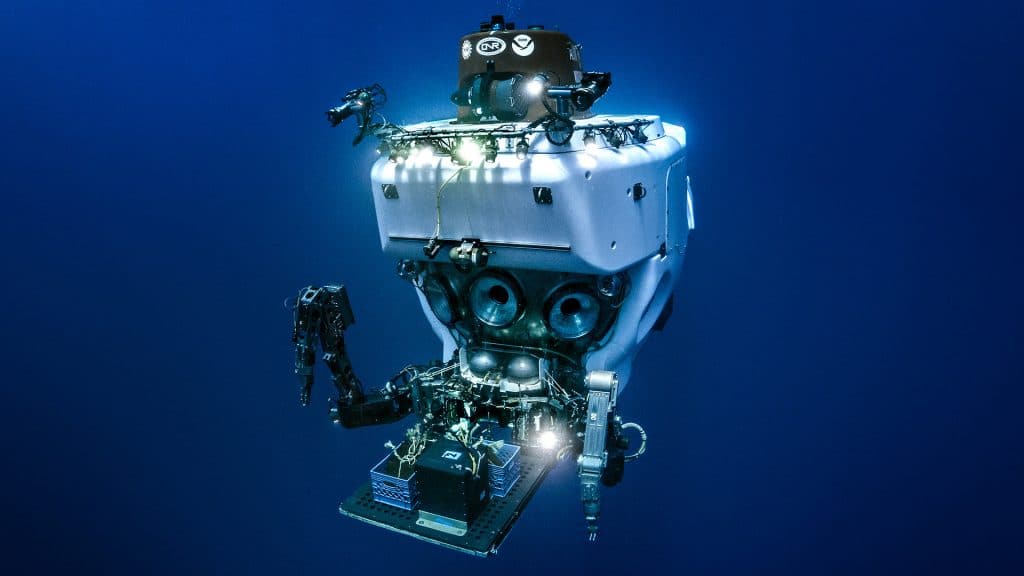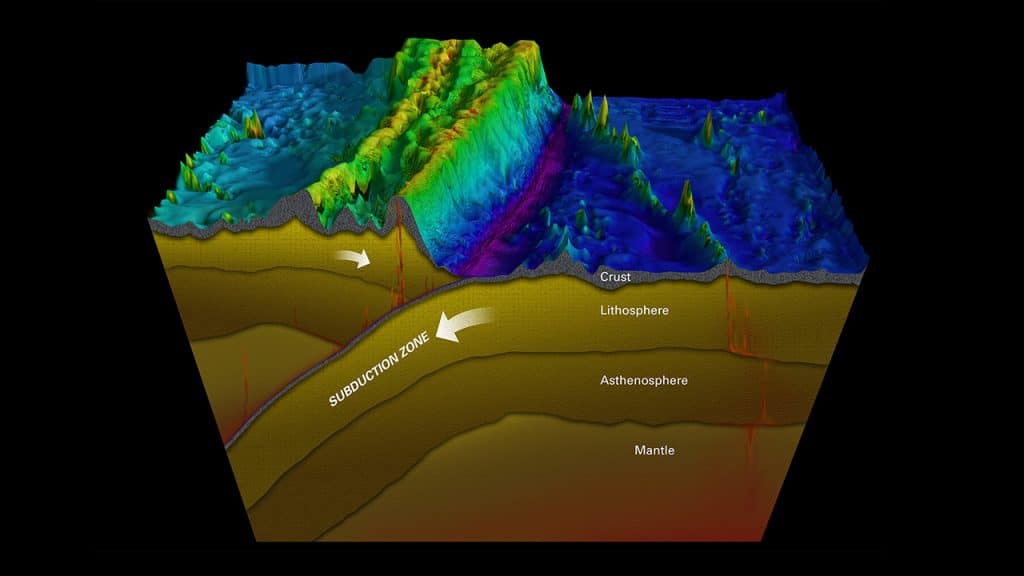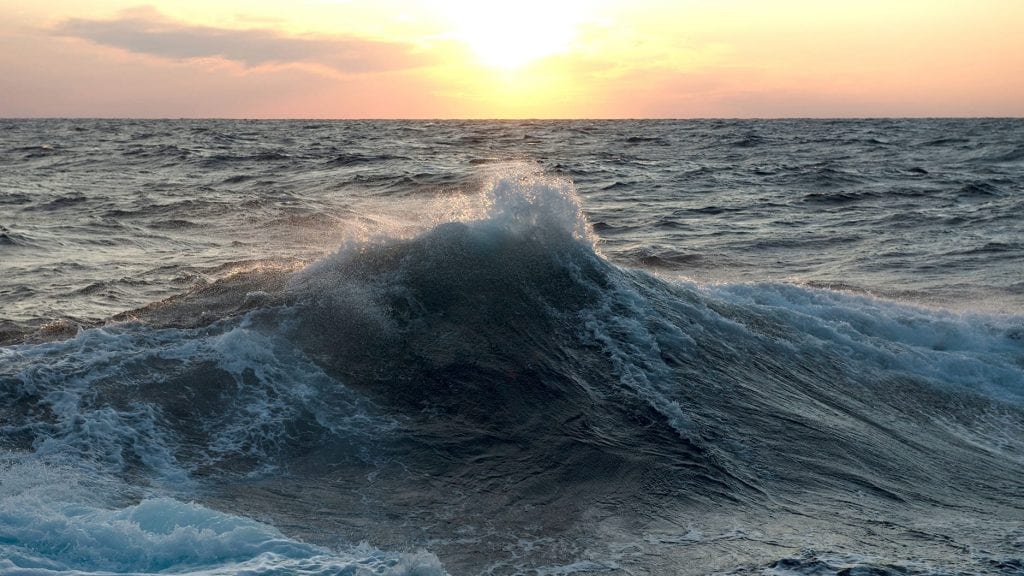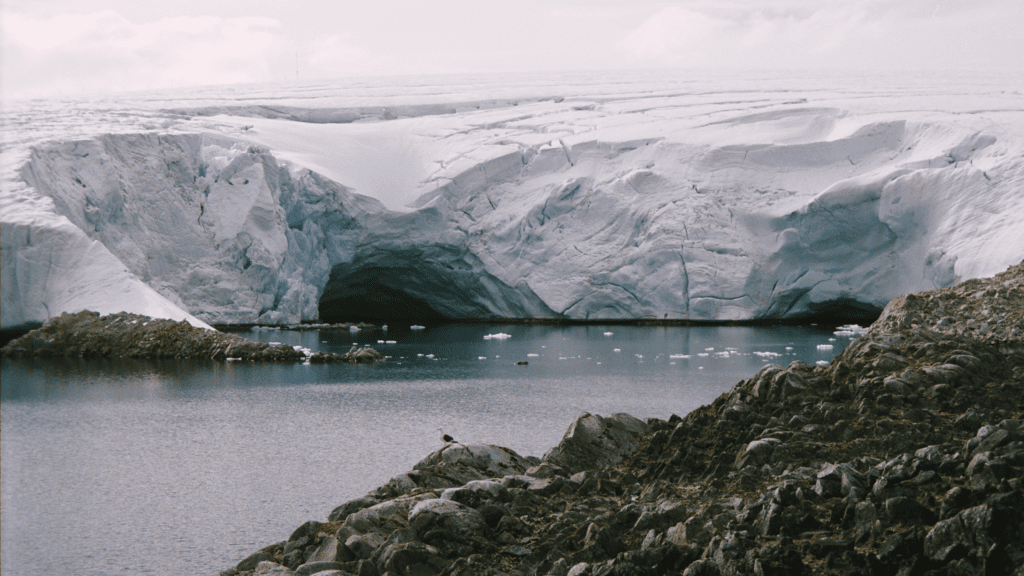
Sometimes oceanographers will take advantage of crushing, deep-sea pressure to make decorated, shrunken Styrofoam cups as souvenirs as well as science outreach. ©Woods Hole Oceanographic Institution
Ocean waters cover about 70 percent of the planet. On average, that water is 3,800 meters (almost 2.4 miles) deep. But in the deepest spots, seawater fills a mind-boggling 11,000 meters (6.8 miles) of space above the seafloor. As anyone who has tried diving to the bottom of a deep pool knows, all that water gets heavy—fast. Extreme pressure is one reason why the ocean floor is still largely unexplored.
When a person, fish, or other marine creature swims, water presses against all sides of them. They feel equal pressure from all directions. Near the ocean’s surface, that pressure is the same as what we feel when standing on land. This amount of pressure is called an atmosphere. The term is used as a unit of measurement. It’s the pressure of Earth’s full atmosphere pressing down on us at sea level. As you travel from sea level to a higher elevation on land, atmospheric pressure drops. That’s because there’s less air above you pressing down.
Similarly, as you travel deeper in water, pressure increases. Underwater pressure is called hydrostatic pressure. (Hydro means water. Static means at rest.) The more water you have above you, the more it pushes against you. But water doesn’t only push down from above. It pushes in from all sides and even from below. That upward force is called buoyancy. It’s what keeps you afloat in water.
Imagine that a diver swims straight down from the surface. As they go, their ears clog. It’s the same feeling you get when you drive up into the mountains. This happens because there’s more pressure on one side of the eardrum than the other. The diver has to swallow or wiggle their jaw to make the pressure equal on both sides. This is what happens when you “pop” your ears.
When the diver reaches 10 meters (33 feet), the pressure is double what it was at the surface. For every 10 meters of water, hydrostatic pressure increases by one atmosphere. At the average ocean depth (3,800 meters), pressure on the sea floor is a whopping 380 times greater than it is at the surface. In the deepest trenches, it’s 1,100 times greater!
All that pressure causes serious problems for people and other air-breathing animals. Our lungs fill with air, and we have air-filled spaces in our heads. Too much pressure would collapse those spaces, crushing us. Animals adapted to deep-ocean life don’t have air pockets in their bodies.
Some marine animals travel between deep ocean and the surface. Sperm whales are the deepest diving mammals. They breathe air. But they have collapsible ribs and lungs that allow the whales to handle the pressure without causing damage.
INTERACTIVE OF DEEP SEA PRESSURE
Oceanographers have had to design special equipment so they can explore the ocean’s depths. Take underwater robots, for example. They are made of extremely strong materials that stand up to pressure. Some underwater vehicles carry people, others are piloted remotely. Both kinds must be able to withstand extreme pressure without cracking. Instruments used to take measurements must also work under all that pressure.
Engineers also work to make underwater vehicles neutrally buoyant. Remember that buoyancy is the force of water pushing up against an object. Imagine the space taken up by the object is instead filled with water. Water in that space weighs the same as the water around it. So hydrostatic pressure is equal on all sides. If the object in that space weighs more than water, it will sink. If it weighs less, it will float. Constantly adjusting position uses up energy. So researchers try to create vehicles that weigh the same as water. This allows them to stay suspended in the water without having to adjust their position.
Hydrostatic pressure is one of the main reasons why so little of the ocean’s floor has been explored. But new advances are changing that. They allow researchers to discover new and unexpected features of our planet. They’re turning the ocean’s depths into the new frontier.
LEARN MORE ABOUT TECHNOLOGY AND THE DEEPEST PARTS OF THE OCEAN
Underwater Vehicles
Oceanographic observing tools has grown to include human-occupied submersibles, remote-controlled vehicles, and autonomous robots.
Ocean Trenches
Ocean trenches are steep depressions exceeding 6,000 meters in depth, where old ocean crust from one tectonic plate is pushed beneath another plate.
American Geosciences Institute. Oceanographer: What is an oceanographer? https://www.americangeosciences.org/education/k5geosource/careers/oceanographer Accessed on November 11, 2020.
NOAA National Ocean Service. How does pressure change with ocean depth? https://oceanservice.noaa.gov/facts/pressure.html Accessed on November 12, 2020.
NOAA. Water Pressures at Ocean Depths. https://www.pmel.noaa.gov/eoi/nemo1998/education/pressure.html Accessed on November 12, 2020.
WHOI. Underwater vehicles. https://www.whoi.edu/know-your-ocean/ocean-topics/tools-technology/underwater-vehicles/. Accessed on November 12, 2020.
DIVE INTO MORE OCEAN FACTS
Where does all the carbon go?
Explore the ocean’s critical role in carbon sequestration and how it could be a pathway to mitigate climate change.
What causes ocean waves?
A trip to the ocean means sun, wind, and waves. Surfers ride them. Children play in them. Swimmers dive beneath them. But what causes waves?
How do glaciers affect sea level rise?
Sea levels have risen and fallen throughout geologic history due to a myriad of natural processes, most notably the forming and melting of glaciers.
How do marine animals hear?
Know your Ocean: Did you know? How do marine animals hear? If you’ve ever plunged your head…






